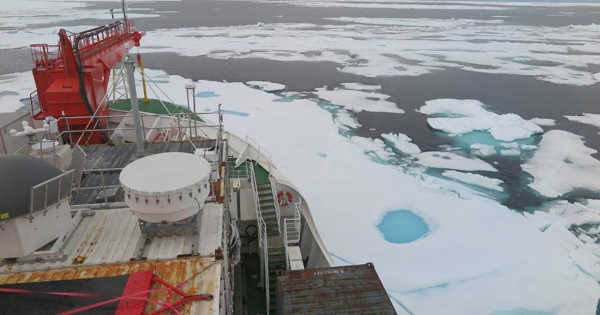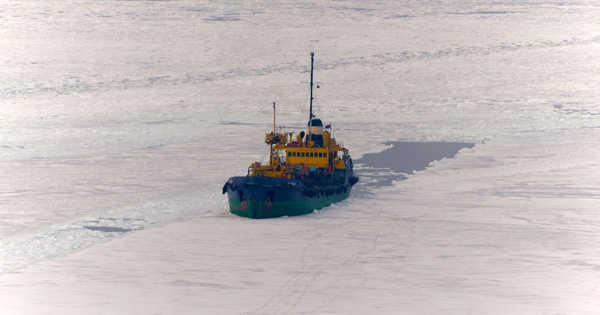Shipping traffic in the Arctic is expected to skyrocket in the coming decades. This activity is already exacerbating climate change and jeopardizing fragile ecosystems.
The economic and environmental benefits and drawbacks of melting Arctic ice shortening shipping routes through the polar region are weighed in groundbreaking research from energy and transportation experts. They conclude that policymakers must properly assess the environmental trade-offs and costs of Arctic shipping, as well as the commercial benefits and opportunities. The authors also want to see more incentives to drive technological advancements that will hasten the adoption of green fuels and technologies.
They conclude that policymakers must properly assess the environmental trade-offs and costs of Arctic shipping, as well as the commercial benefits and opportunities. The authors also want to see more incentives to drive technological advancements that will hasten the adoption of green fuels and technologies.
The Arctic is the planet’s fastest-warming region.
The economic and environmental pros and cons of melting Arctic ice creating shorter shipping routes through the polar region are weighed up in ground-breaking research from UCL experts in energy and transport.
Shorter Arctic shipping routes, which require less fuel, are already being used by a few ships when areas of Arctic ice melt during the summer. However, the period during which these routes are navigable is expected to lengthen as global warming continues, and if warming exceeds the 1.5?C/2?C limit set in the Paris agreement, permanent Arctic ice may become a thing of the past.
The study, published in Transportation Research Part A: Policy and Practice, examined the financial competitiveness of Arctic shipping while taking into account the environmental impact of these vessels’ emissions.
They examined two policy scenarios: one that is business as usual, with no policy on emissions, and the other that is operating under an Arctic-specific zero-emissions policy, with ships that can run on renewable energy considered.

According to studies, overall shipping activity in the Arctic will increase by more than 50% between 2012 and 2050. It will mean that Arctic summer sea ice will continue to shrink. Global warming has resulted in the thinning of polar ice, to the point where an increasing number of ships are using Arctic shipping routes, which can significantly reduce journey times. Unless a ship is escorted by an icebreaker, these routes are generally only open in the summer.
When environmental costs are taken into account, residual fuel oil derived from fossil fuels is less expensive than alternative fuels. However, when the environmental consequences of accelerating climate change and the negative effects of ship emissions on human health are taken into account, residual fuel ships are no longer viable due to their contribution to greenhouse gas and air pollutant emissions.
According to the experts, green ammonia fuel cell ships are the most commercially viable in the second scenario, and policies that facilitate the introduction of such zero-carbon fuels and zero-emission technologies should be encouraged. Given a green electric infrastructure, green ammonia is an example of a fuel that can be produced and used without emitting any emissions.
According to lead author Joseph Lambert (UCL Energy Institute), “Significant change is occurring in the Arctic region as a result of global warming, and from a shipping standpoint, we should prepare for what this means by assessing all opportunities, risks, and trade-offs that aren’t solely financial. As global warming progresses and Arctic ice melts, these routes may become more financially viable, but other factors must be considered. It is critical that Arctic ice remain permanent in order to meet global warming targets and protect the region’s ecology.”
Dr. Tristan Smith (UCL Energy Institute), who co-authored the paper and oversaw the research, stated: “This is a novel work that shows the economic and environmental costs of the Arctic route, as well as how certain technological choices, which could be incentivized through policy, could significantly reduce the environmental costs that would otherwise be incurred by Arctic shipping. The paper provides a clear justification for governments to intervene now to prevent the melting Arctic from lowering shipping costs due to further accelerated degradation of this critical ecosystem.”
According to the researchers, the effects of environmental damage must be investigated, as well as how policy can be structured to address environmental concerns.
















